Sponsored Content

About 29 million people in the United States rely on community-based organizations (CBOs), which provide care to low-income and uninsured patients, often living with infectious disease including HIV/AIDS and Hepatitis C [9]. Since the onset of the HIV epidemic, community-based organizations have proved vital to the United States’ HIV prevention efforts, delivering the most effective HIV prevention strategies to those who need them the most and are at the greatest risk of infection [1]. As the U.S. continues to battle COVID-19, community-based organizations are facing unprecedented demands to combat COVID-19 while continuing to deliver essential HIV prevention and treatment services [2].
According to Kelsey Louie, GMHC, CEO:
“COVID-19 created unprecedented challenges for GMHC in ensuring that we could sustain our services for our clients during the pandemic. We pivoted many of our programs to remote delivery using video conferencing and implemented at-home HIV testing so these vital services could continue to be accessible to our communities. The new technologies that we have embraced during COVID-19 including telehealth and Mesmerize’s patient education platform, will continue to be vital parts of our programming well after the pandemic ends.”
Many CBOs shared case studies demonstrating the impact of COVID-19 on their organizations at the 2020 United States Conference on HIV/AIDS (USCHA). Here are 5 ways COVID-19 affects community-based organizations and their efforts to end the country’s HIV epidemic:
1. Testing is the only way to know if you have HIV. If everyone knew their status, we could protect ourselves and each other, bringing us closer to ending the epidemic. As a result of COVID-19, however, community-based organizations were forced to think outside of the box to maintain client access to essential HIV prevention and care services including HIV, Hepatitis C (HCV) and STI testing.
Community-based organizations that have been providing long-standing and proven-effective HIV, HCV and STI testing to communities at risk have had to change their standard testing procedures to continue providing these vital services while also addressing COVID-19 [6]. As a result of COVID-19, most CBOs were forced to change their traditional methods of care to continue in-person appointments while prioritizing the safety of their staff and clients and preventing the transmission of COVID-19. Changes to care included pre-screening prior to scheduling appointments, integrating HIV screening services into existing workflows, designating exam rooms to patients who are known to be at risk of COVID-19, and disinfecting all exams rooms after each appointment [5]. While there are options for at-home HIV testing, STI testing requiring bloodwork must be done by a practitioner on-site. CBO staff are working hard to ensure that newly diagnosed patients are immediately linked to treatment and existing patients are adhering to their medications, while simultaneously working to prevent an already vulnerable population from getting COVID-19.
2. Community-based organizations are working to address and integrate COVID-19 with their existing HIV, Hepatitis, and STI care and prevention programs. Their deep community roots and relationships make them uniquely equipped to handle the transition from protecting vulnerable populations from infectious disease to include COVID-19 as well.
CBO staff have reported adding COVID-19 work to their scope of usual services and are calling for additional resources to address emerging COVID-19 related needs among their clients [6]. Most organizations reported some level of involvement in COVID-19 related activities, including educating clients about COVID-19 risks and protective measures, conducting COVID-19 testing and contact tracing, and providing counseling and care for clients with COVID-19 [7]. Compared to the traditional doctor’s office, community-based organizations have deep community roots as well as strong expertise in addressing social supports such as mental and personal care within the communities they serve [10]. This makes CBOs uniquely positioned to transition their staff’s expertise from sexual health to general health and makes them well equipped to incorporate questions pertaining to COVID-19 concerns including mental health and wellness, social isolation and current events, into previously routine testing appointments [8]. Some organizations still reported the need for additional staff training and educational materials on COVID-19 to distribute to clients, which Mesmerize continues to provide to these organizations in conjunction with the Center for Disease Control (CDC) [7].
3. Community-based organizations have adopted and executed new measures and strategies to address COVID-19 related needs among their clients.
Many community-based organizations have adopted new strategies to continue providing quality service to the communities they serve. New strategies include digitizing client forms and medical records, as well as utilizing virtual care as an additional means for providing health education and counseling [6]. While the pace at which these organizations were able to execute such new strategies is remarkable, many reported needing additional resources to properly implement these strategies, including technical assistance to integrate COVID-19 within HIV, HCV and STI services, technology training, and structured clinical support for staff [7]. Additionally, while technology has been able to solve for some of the problems facing CBOs, there are many services these organizations provide to the community that must be addressed in-person, including STI testing, affordable housing, and meal services. In an effort to continue providing these essential in-person services, CBOs have had to purchase additional PPE for their staff, as well as hand sanitizer and masks for community distribution, requiring significant investment from these organizations [7].
4. CBOs have a history of facing financial challenges, with many organizations having few or no financial reserves, running persistent operating deficits, and having a lack of access to capital for investment in resources and technology [8]. Community based organizations have incurred immediate expenses connected to the COVID-19 epidemic [7].
Many community-based organizations have limited or no financial reserves, making them extremely vulnerable to fluctuations in expected revenue and cost levels [8]. COVID-19 has resulted in immediate expenses for CBOs, including the implementation of safety measures, infrastructure enhancement, and changes to their standard provision of services [7]. While many organizations were able to quickly and creatively implement new methods to continue providing quality HIV, HCV and STI care throughout the COVID-19 epidemic, these rapid enhancements require significant investment from CBOs, including investments in Electronic Health Records (EHR), computers, and hotspots [7]. Many organizations are tapping into their funds amidst the cancelling of fundraising events [7]. Even those with unrestricted funds are concerned about the long-term sustainability of implementing safety and procedural measures to address COVID-19 while continuing to provide foundational HIV and Hepatitis prevention and care services [6]. CBOs present at USCHA also expressed concern over their ability to strategically separate funds so that money reserved for HIV and Hepatitis prevention and care is not spent fighting COVID-19 [7]. Organizations are hopeful that the next round of government funding will provide valuable support for CBOs to continue providing these valuable services, while also offsetting some of the losses they’ve incurred fighting COVID-19, and better preparing them for the future.
5. While adopting new methods and strategies to simultaneously fight both the AIDS and COVID-19 epidemics has been costly, many CBOs believe these new practices are for the better of the organization and will be adopted long-term with lasting impact.
Many CBOs invested in technology upgrades, provision of virtual services, and HIV/HVC/STI program adaptation to continue providing essential services to their clients while simultaneously navigating new measures in place to address COVID-19. While COVID-19 has created unprecedented and numerous challenges to community-based organizations, The Stronger Together Partnership (comprised of The Black AIDS Institute, San Francisco Community Health Center and Latino Commission on AIDS) applauds these organizations for their ability to “take on the challenges by implementing team approaches to problem solving, embracing technological upgrades, and fostering innovation. Many leadership staff have identified lessons learned from this pandemic and are doing their best to see this as an opportunity to develop new strategies and expand their service portfolio” [6]. Many organizations also reported that the new strategies and measures put in place to respond to COVID-19 will prepare them for emergency responses in the future, allowing them to better serve their community and be prepared for whatever may impact them next.
Sources
[1] CDC NCHHSTP. “CDC Awards $216 Million to Community-Based Organizations to Deliver the Most-Effective HIV Prevention Strategies to Those in Greatest Need.” HIV.gov, 1 July 2015, www.hiv.gov/blog/cdc-awards-216-million-to-community-based-organizations-to-deliver-the-most-effective-hiv-prevention-strategies-to-those-in-greatest-need.
[2] “COVID-19 and HIV.” Centers for Disease Control and Prevention, Centers for Disease Control and Prevention, 10 Aug. 2020, www.cdc.gov/hiv/covid-19/index.html.
[3] “The COVID-19 Pandemic’s Impact of HIV and Hepatitis Programs.” NASTAD, NASTAD, 12 Aug. 2020, www.nastad.org/sites/default/files/resources/docs/covid19-impact-hiv-hepatitis-programs.pdf.
[4] Dreyfus, Susan, and Tracy Wareing Evans. “The Importance of Community-Based Organizations in Human Services.” Independent Sector, Independent Sector, 23 Jan. 2018, independentsector.org/news-post/the-importance-of-community-based-organizations-in-human-services/.
[5] Hadayia, Jennifer. “US Conference on HIV/AIDS.” Legacy Community Health, Expansion/Integration: HIV Testing & PrEP During a Pandemic, 19 Oct. 2020, vevents.virtualtradeshowhosting.com/event/USConferenceonHIVAIDS/en-us#!/Workshops/n820161. .
[6] Hucks-Ortiz, Christopher, et al. “COVID-19 National Rapid Assessment Preliminary Report: The Institutional Impact of COVID-19 on Organizations of Color Providing HIV/STI/HCV Services to People of Color across the U.S., Puerto Rico, U.S. Virgin Island, and Affiliated Pacific Island Jurisdictions.” Institute for Latinx Health Equity, 2020, ilhe.org/stronger-together-partnership-c19-national-rapid-assessment-preliminary-report/.
[7] Hucks-Ortiz, Christopher, et al. “US Conference on HIV/AIDS.” Stronger Together Partnership (STP), Impact of COVID-19 on Organizations of Color Providing HIV/STI/HCV Services, 19 Oct. 2020, vevents.virtualtradeshowhosting.com/event/USConferenceonHIVAIDS/en-us#!/Workshops/n820161.
[8] Shaw, John, et al. “US Conference on HIV/AIDS.” The Project of Primary Healthcare, A New Normal: HIV/HCV/STI Testing during Covid-19, 20 Oct. 2020, vevents.virtualtradeshowhosting.com/event/USConferenceonHIVAIDS/en-us#!/Workshops/n820161.
[9] Stone, Will. “Under Financial Strain, Community Health Centers Ramp Up For Coronavirus Response.” NPR, NPR, 24 Mar. 2020, www.npr.org/sections/health-shots/2020/03/24/821027067/under-financial-strain-community-health-centers-ramp-up-for-coronavirus-response.
[10] Super, Nora Mary Kaschak Elizabeth, et al. “Health Care And Community-Based Organizations Have Finally Begun Partnering To Integrate Health And Long-Term Care: Health Affairs Blog.” Health Affairs, 2 Feb. 2018, www.healthaffairs.org/do/10.1377/hblog20180130.620899/full/.
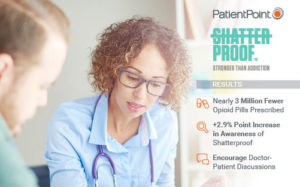 To help combat opioid addiction, PatientPoint® collaborated with Shatterproof – a nonprofit organization focused on ending the stigma of addiction and improving addiction treatment – to create a powerful opioid education program at the point of care. It launched nationwide in October 2017 across the digital PatientPoint engagement platform, reaching an estimated 15 million patients and caregivers each month in waiting rooms, exam rooms, and in the physician back office. The content is designed to increase the awareness of opioid addiction and encourage doctor-patient discussions about other treatment options.
To help combat opioid addiction, PatientPoint® collaborated with Shatterproof – a nonprofit organization focused on ending the stigma of addiction and improving addiction treatment – to create a powerful opioid education program at the point of care. It launched nationwide in October 2017 across the digital PatientPoint engagement platform, reaching an estimated 15 million patients and caregivers each month in waiting rooms, exam rooms, and in the physician back office. The content is designed to increase the awareness of opioid addiction and encourage doctor-patient discussions about other treatment options.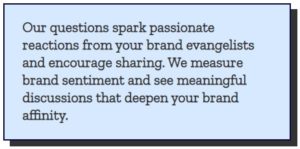 The Tylt is the fastest growing social polling and opinion
The Tylt is the fastest growing social polling and opinion  For healthcare campaigns, the process begins with locating the right patient and encouraging them to share their opinion on a personally meaningful health topic. Patient advocacy becomes democratized when declared sentiments, informed by supporting evidence, are shared socially. By bringing structure to health conversations as they trend across social, patient insights can be identified and addressed in the next wave of interactive content, positioning the brand as a partner in the journey to better health.
For healthcare campaigns, the process begins with locating the right patient and encouraging them to share their opinion on a personally meaningful health topic. Patient advocacy becomes democratized when declared sentiments, informed by supporting evidence, are shared socially. By bringing structure to health conversations as they trend across social, patient insights can be identified and addressed in the next wave of interactive content, positioning the brand as a partner in the journey to better health. And it’s becoming increasingly clear that brands have had enough.
And it’s becoming increasingly clear that brands have had enough. 
 Branding: What Science Says About Engaging People
Branding: What Science Says About Engaging People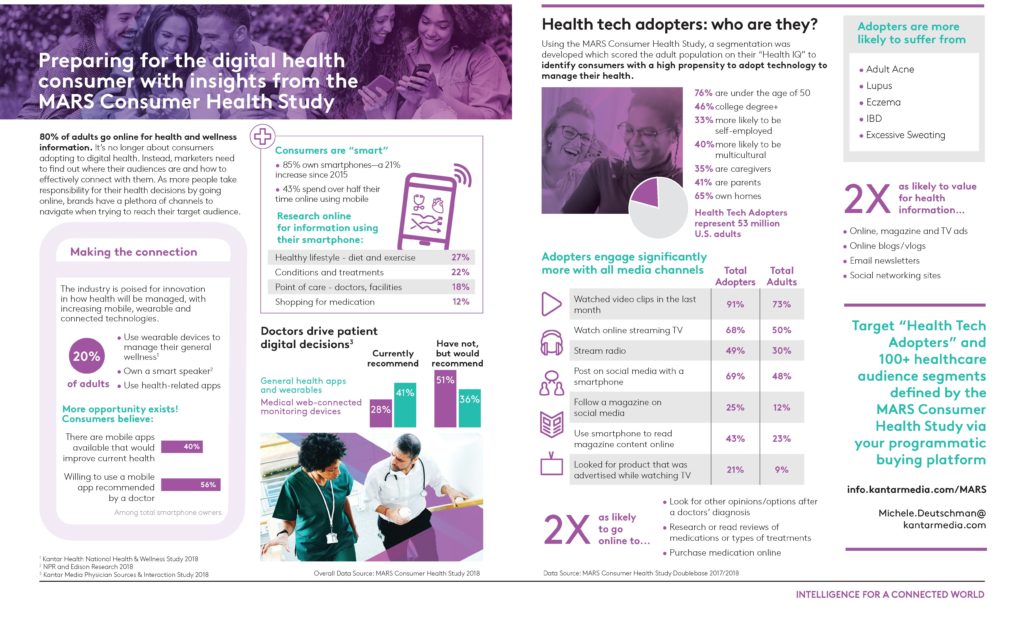

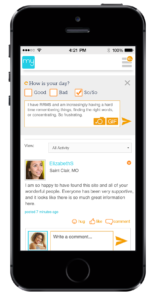
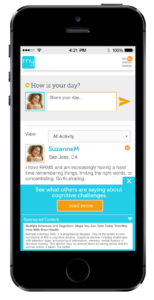
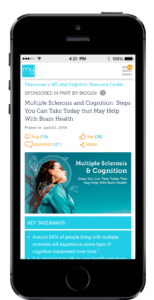
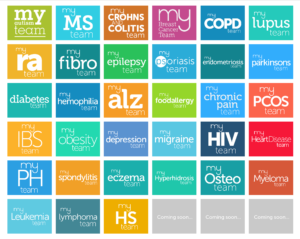
 Many people associate weather conditions with their health and wellbeing. Perhaps you have family members claim to be able to sense changes in the weather because they feel a migraine coming on, friends who swear they can forecast rainfall better than the meteorologists due to increases in pain levels within their joints, or even co-workers who claim to be allergic to certain types of weather. Observations about the interactions between weather and health are not a modern phenomenon. People have been making them for almost 2,500 years—since the writings of Greek physician Hippocrates—and correlations between weather and wellness, if proven, are potentially valuable information for organizations and companies across the healthcare economy.
Many people associate weather conditions with their health and wellbeing. Perhaps you have family members claim to be able to sense changes in the weather because they feel a migraine coming on, friends who swear they can forecast rainfall better than the meteorologists due to increases in pain levels within their joints, or even co-workers who claim to be allergic to certain types of weather. Observations about the interactions between weather and health are not a modern phenomenon. People have been making them for almost 2,500 years—since the writings of Greek physician Hippocrates—and correlations between weather and wellness, if proven, are potentially valuable information for organizations and companies across the healthcare economy. Healthline Insider’s Ingrid Eberly sat down for a conversation with our SVP of Media Strategy & Revenue, Dante Gaudio, on the topic of narrative and the power of narrative in health. In his role, Dante spends a lot of time thinking about ways he can help health brands build powerful stories to change people’s lives.
Healthline Insider’s Ingrid Eberly sat down for a conversation with our SVP of Media Strategy & Revenue, Dante Gaudio, on the topic of narrative and the power of narrative in health. In his role, Dante spends a lot of time thinking about ways he can help health brands build powerful stories to change people’s lives. Reinforcing your brand message with a dynamic media mix
Reinforcing your brand message with a dynamic media mix